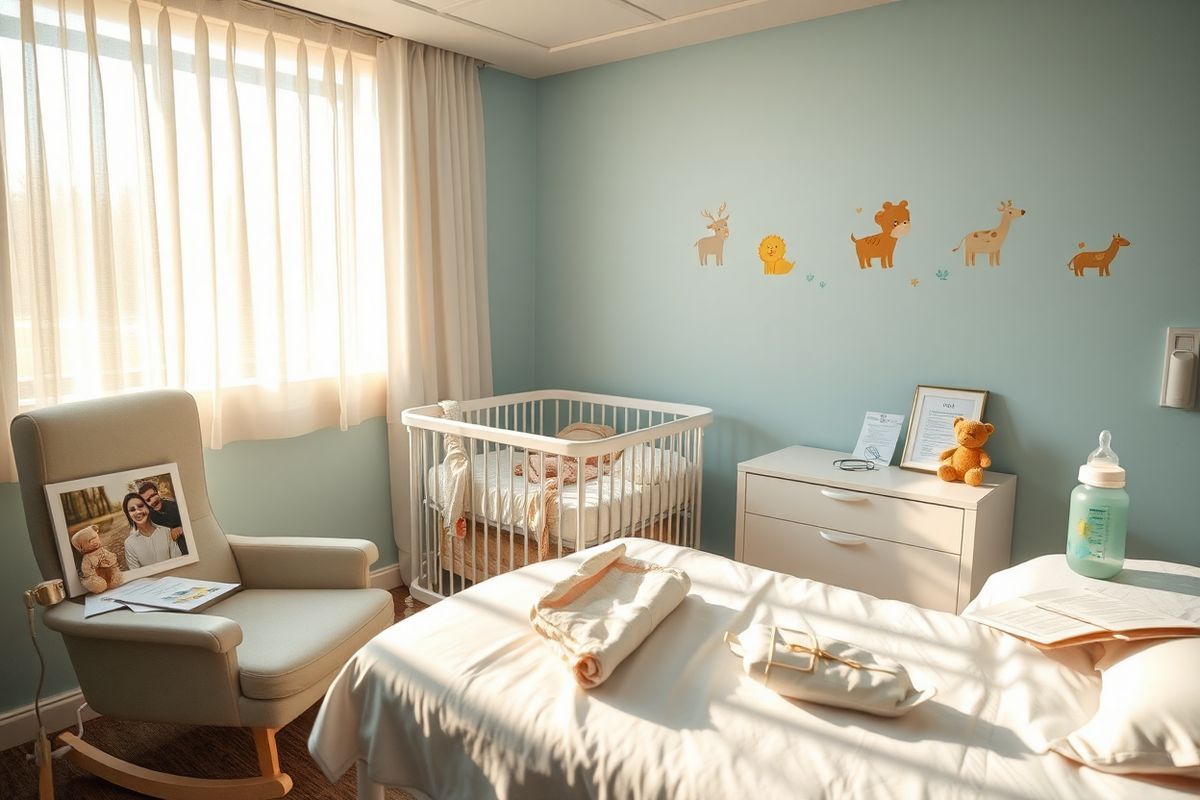Table of Contents
Understanding Cleft Lip and Palate: Causes and Implications

Cleft lip and palate occur when the tissues forming the lip and roof of the mouth do not fully come together during fetal development. This process typically happens between the 6th and 11th weeks of pregnancy. If the tissue does not join, it can lead to various clefts, which may range from a small notch in the lip to a large gap that extends into the nose, as well as openings in the palate (NIDCR, 2023).
Children born with these conditions may experience a range of functional challenges, including difficulties in feeding and speech development. They are also at a higher risk for complications such as ear infections and hearing loss, as well as dental issues (NIDCR, 2023). The underlying causes of cleft lip and palate can be classified into genetic factors, environmental influences, and syndromic associations. Genetic syndromes linked to these conditions include Waardenburg syndrome, Pierre Robin sequence, and Down syndrome, with approximately 30% of cleft cases associated with such syndromes (NIDCR, 2023).
Common Problems Associated with Cleft Lip and Palate
- Feeding Difficulties: Infants with cleft lip and/or palate often cannot create a proper seal for breastfeeding or using standard bottles, leading to inadequate nutrition.
- Speech Issues: If not corrected, cleft palate can result in speech problems, characterized by unclear or nasal-sounding speech.
- Hearing Loss: Children may be prone to frequent ear infections, which can lead to temporary or permanent hearing loss.
- Dental Problems: The alignment and development of teeth may be adversely affected, increasing the risk of dental issues later in life.
| Common Problems | Description |
|---|---|
| Feeding Difficulties | Inability to create a seal for effective breastfeeding or bottle feeding. |
| Speech Issues | Potential for unclear speech or nasal-sounding voice due to improper palate structure. |
| Hearing Loss | Increased risk of ear infections which can result in temporary or permanent hearing loss. |
| Dental Problems | Misalignment and developmental issues with teeth, leading to a higher risk of dental decay. |
Preparing for Your Child’s Cleft Lip and Palate Surgery: Essential Steps

Preparation for surgery is critical to ensure the best possible outcomes. Here are essential steps parents should take:
-
Consultation with Specialists: Before surgery, parents should meet with a multidisciplinary team that may include a plastic surgeon, speech pathologist, pediatric dentist, nutritionist, and audiologist. This team will provide guidance on the necessary procedures and timelines (NIDCR, 2023).
-
Feeding Techniques: Infants with a cleft lip or palate may need specialized feeding bottles and techniques. Healthcare providers will educate parents on how to use these bottles effectively to ensure adequate nutrition before surgery (Lurie Children’s, 2023).
-
Preoperative Assessments: Prior to surgery, the child will undergo evaluations to assess their overall health and readiness for the procedure. This may include blood tests, imaging, and assessments of feeding and speech abilities.
-
Parental Support: Emotional support for parents is crucial. Joining support groups can help parents connect with others who have gone through similar experiences.
-
Logistics Planning: Parents should plan for the logistics surrounding the surgery day, including transportation, childcare for siblings, and time off work.
The Surgical Procedure: What to Expect During Cleft Lip and Palate Repair
Cleft Lip Repair
Cleft lip surgery is typically performed when the infant is between 3 and 6 months old. The procedure involves:
- Anesthesia: The child will be placed under general anesthesia.
- Incision and Repair: The surgeon makes incisions around the cleft to reshape and join the tissue. The goal is to create a normal lip contour and minimize scarring (NIDCR, 2023).
- Postoperative Care: After surgery, the child usually stays overnight for monitoring. Parents will receive instructions on how to care for the surgical site, including scar management.
Cleft Palate Repair
Cleft palate surgery is generally performed between 10 and 12 months of age. The procedure involves:
- Anesthesia: General anesthesia is administered.
- Muscle and Tissue Repositioning: The surgeon carefully rearranges the muscles and tissues to close the gap in the palate. This is critical for improving feeding and speech development (Lurie Children’s, 2023).
- Hospital Stay: Similar to lip repair, the child will be monitored overnight to ensure they are comfortable and able to drink fluids.
Post-Surgery Care: Recovery Tips for Cleft Lip and Palate Patients
Postoperative care is vital for ensuring a smooth recovery. Here are some tips for parents:
-
Pain Management: Follow the surgeon’s recommendations for pain management. Over-the-counter pain relievers may be prescribed, and parents should monitor their child for discomfort.
-
Feeding Guidelines: After lip repair, feeding can typically continue as normal. After palate surgery, specific feeding methods, such as cup feeding, may be recommended to avoid putting pressure on the surgical site (Lurie Children’s, 2023).
-
Wound Care: Parents will need to keep the surgical site clean and dry. Instructions for cleaning and caring for the area will be provided by the healthcare team.
-
Regular Follow-ups: Schedule regular follow-up appointments with the surgical team to monitor healing and address any concerns.
-
Emotional Support: Both the child and parents may experience a range of emotions during recovery. Providing emotional support and, if necessary, counseling can be beneficial for the family.
Supporting Your Child’s Development After Cleft Lip and Palate Surgery
Once the initial recovery period is over, ongoing support is essential to ensure that children reach their developmental milestones. Here are areas to focus on:
-
Speech Therapy: Engaging a speech therapist early can help address any speech delays or challenges. Regular sessions can significantly enhance communication skills (Lurie Children’s, 2023).
-
Dental Care: Regular dental check-ups are crucial, as children with cleft lip and palate may face dental issues. Orthodontic interventions may be needed as the child grows.
-
Social Support: Encourage participation in social activities and playdates. Children with cleft lip and palate can thrive socially when supported in their interactions with peers.
-
Monitoring Growth and Development: Regular check-ups with pediatricians will help track growth and any additional needs that may arise.
FAQ
What is a cleft lip and palate?
A cleft lip and palate are congenital conditions characterized by openings or splits in the upper lip and/or roof of the mouth. These occur due to improper fusion of facial structures during fetal development.
At what age is surgery performed for cleft lip and palate?
Cleft lip surgery is generally performed when the child is between 3 to 6 months old, while cleft palate surgery usually occurs between 10 to 12 months of age.
What can I expect after surgery?
Post-surgery, children may experience some pain and discomfort. They will typically stay overnight for monitoring and will receive instructions on feeding and wound care.
Will my child need additional surgeries?
Yes, many children with cleft lip and palate may require additional surgeries as they grow, particularly for dental alignment and speech improvement.
How can I support my child’s recovery?
Provide emotional support, follow the healthcare team’s instructions for care, ensure regular follow-up appointments, and consider engaging with speech and occupational therapists for developmental support.
References
- Cleft Lip & Palate. (n.d.). National Institute of Dental and Craniofacial Research. Retrieved from https://www.nidcr.nih.gov/health-info/cleft-lip-palate
- Cleft lip and palate. (n.d.). NHS. Retrieved from https://www.nhs.uk/conditions/cleft-lip-and-palate/
- Cleft Lip & Cleft Palate. (n.d.). Lurie Children’s. Retrieved from https://www.luriechildrens.org/en/specialties-conditions/cleft-lip-cleft-palate/










